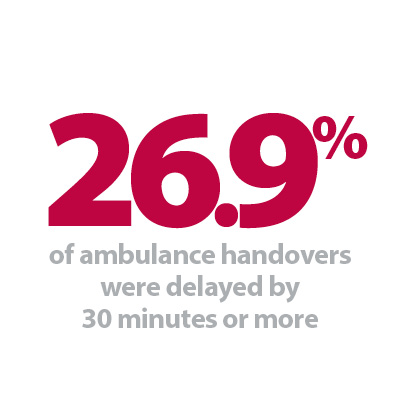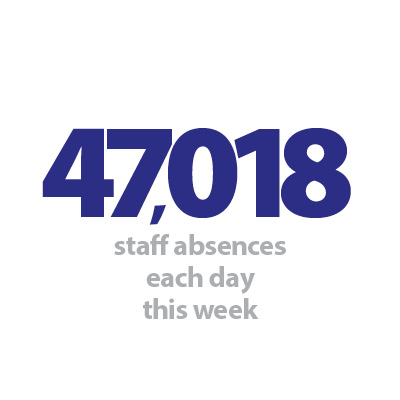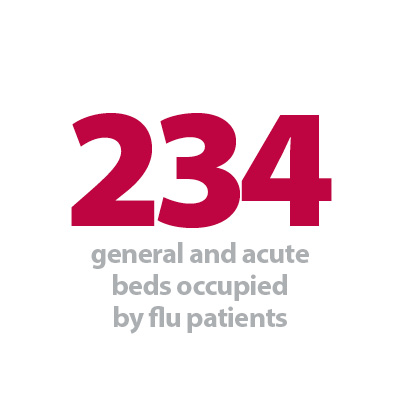


Introduction
Our NHS Winter Watch 2023/24 series starts today following the release of the winter situation report data from NHS England. Every Thursday until the end of February, we will be tracking key activity and demand figures across the NHS. We will analyse the data, highlighting key trends to understand the pressure trusts are under throughout the winter.
The findings from our recent State of the provider sector survey demonstrate the concern of trust leaders about upcoming winter pressures. These weekly NHS England figures will give us timely insight into the performance of trusts across England.
We have compared data to last week and previous years, highlighting changes to put the current figures into perspective.
Throughout our NHS Winter Watch series, we will have contributions from our members and stakeholders to connect those numbers with the real-life experiences of trusts and staff working on the frontline.
Winter situation report (27 November – 3 December)
A&E closures: There were no A&E closures this week.
A&E diverts: There were 22 A&E diverts this week, five more than the week prior, but four fewer than the same week last year.
Adult critical care: Adult critical care bed occupancy is at 80.1% this week, a similar level to the week before (79%), and the same level as this time last year (80.1%). The average number of critical care beds open this week is 3,948 – 1.5% fewer than the same time last year.
Ambulance arrivals: A total of 83,873 patients arrived by ambulance. This is a decrease of 6.3% since last week but up by 7.7% compared to the same week last year.
Ambulance handovers: 26.9% of ambulance handovers were delayed by 30 minutes or more, up from 25.2% last week. 9.8% were delayed by 60 minutes or more. This is up from 9.2% last week. A total of 18,703 hours were lost to ambulance handover delays. This is down by 23.3% compared to the same week last year.
Diarrhoea and vomiting (D&V): The number of beds closed due to D&V and norovirus has increased this week, with an average of 499 closed per day. This is up from 431 last week.
Discharges: There were an average of 23,443 patients each day who no longer met the criteria to reside, an increase of 2% (528 more). Of these, over half (55.0%, 12,883) remained in hospital, a similar proportion to the week prior (55.2%).
Flu: This week the average number of general and acute beds occupied by flu patients each day increased by 53% to 234. An average of nine critical care beds were occupied by flu patients each day this week (29% more than the week before).
General and acute (G&A) beds: There were an average of 100,903 G&A beds open each day. On average each day, 72 G&A beds were unavailable and void to non-Covid admissions. Average bed occupancy remains high at 94.4%, a similar level to both last week and last year (94.5%).
Long stay: The number of patients staying in hospital longer than seven, 14, and 21 days has increased since last week (up by 0.4%, 0.8% and 0.5% respectively). However, compared to the same time last year these are all down (by 2.1%, 2.9%, and 4.3% respectively).
Neonatal intensive care beds: For all trusts, bed occupancy has increased from last week and is at 67.4%; this is up from 66.7% last week. The average number of care beds open is at 1,711, 2% higher than last week.
Paediatric intensive care beds: For all trusts, bed occupancy has increased this week to 86.4%, up from 85.6% last week. The average number of care beds open has fallen this week to 363, down by 0.6%. The average number of care beds available has also fallen to 49 (four fewer than last week).
Respiratory syncytial virus (RSV): An average of 162 beds were closed this week due to RSV symptoms, up from 140 last week and also up from 138 last year.
Staff absences: There were an average of 47,018 total absences each day this week, of which 3% were Covid-19 related (1,618). The total number of staff absences has increased from the week before (46,201), but the proportion of Covid-19 related absences has decreased from 4%.
Our view
This week's figures reflect the significant pressures that trusts are under with the winter season now underway. We are seeing a rise in virus-related cases as more patients are being admitted to hospital with flu and norovirus compared to last week, and there have been increases in the number of RSV cases.
Measures are in place to put the healthcare system in a better position this winter. The number of G&A beds available this week is at 100,903 – an increase of 1.4% from last year – but despite this, occupancy remains concerningly high at 94.4%. This week also saw occupancy rates increasing for both neonatal and paediatric intensive care.
Furthermore, challenges with patient flow persist, which have a wider impact across the health and social care sector. Almost 13,000 medically fit patients remained in hospital each day this week, equating to over half (55%) of all patients that no longer met the criteria to reside. Another sign of issues with patient flow is the increase in ambulance handover delays, as we see the proportion of handovers delayed by more than 30 and 60 minutes both up from last week.
These pressures continue to be exacerbated by workforce constraints. This week saw an average of 800 additional staff absences compared to the week before, now at over 47,000, and trust leaders must now prepare for further industrial action, with the announcement of more strikes from junior doctors later this month. This reinforces the concerns that trust leaders rightfully expressed in our State of the provider sector survey, as they navigate through this challenging winter period amid the longest consecutive strike in the history of the NHS.